A Boat Full of Artists Made Art All the Way to Antarctica
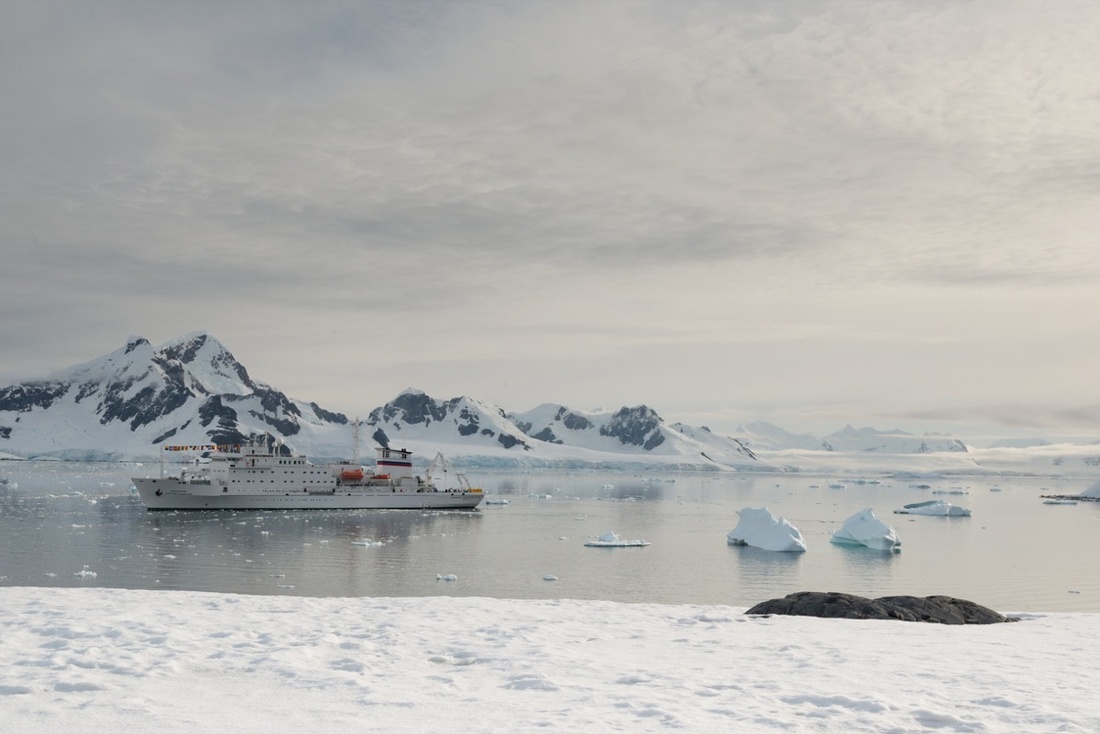 Photo courtesy of Antarctic Biennale.
Photo courtesy of Antarctic Biennale.
Antarctica in the 21st century is something of a paradox. This most forbidding of places is fragile, dissolving as we watch—and more susceptible than ever to invasion.
Visitors to the region are made to vacuum their outerwear and inspect their pockets for seeds, crumbs, and other non-native elements before first setting foot on terra firma. People in this austere land, even travelers and wandering artists, are by definition aliens.
Enter the Antarctic Biennale—a head-turning proposition, to say the least. In recent decades, artists like Lita Albuquerque and Werner Herzog have piggybacked onto national science programs for access to the region. Now this expedition, which ended its voyage today, untethers artists from these sorts of science field trips in order to “propose an expanded Antarctic imaginary,” as curator Nadim Samman describes it.
For the past 11 days, artists have been preparing work aboard the chartered vessel Akademik Sergey Vavilov and activating it primarily during shore landings. A selection of the work—much of it in documentary form, most likely—will be unveiled, together with pre-expedition commissions, at the Venice Biennale’s Antarctic Pavilion, on May 9th.
The works of the Antarctic expedition are being positioned as what Samman calls a “provocation” to the Venice Biennale’s nation-centric organizing principle.
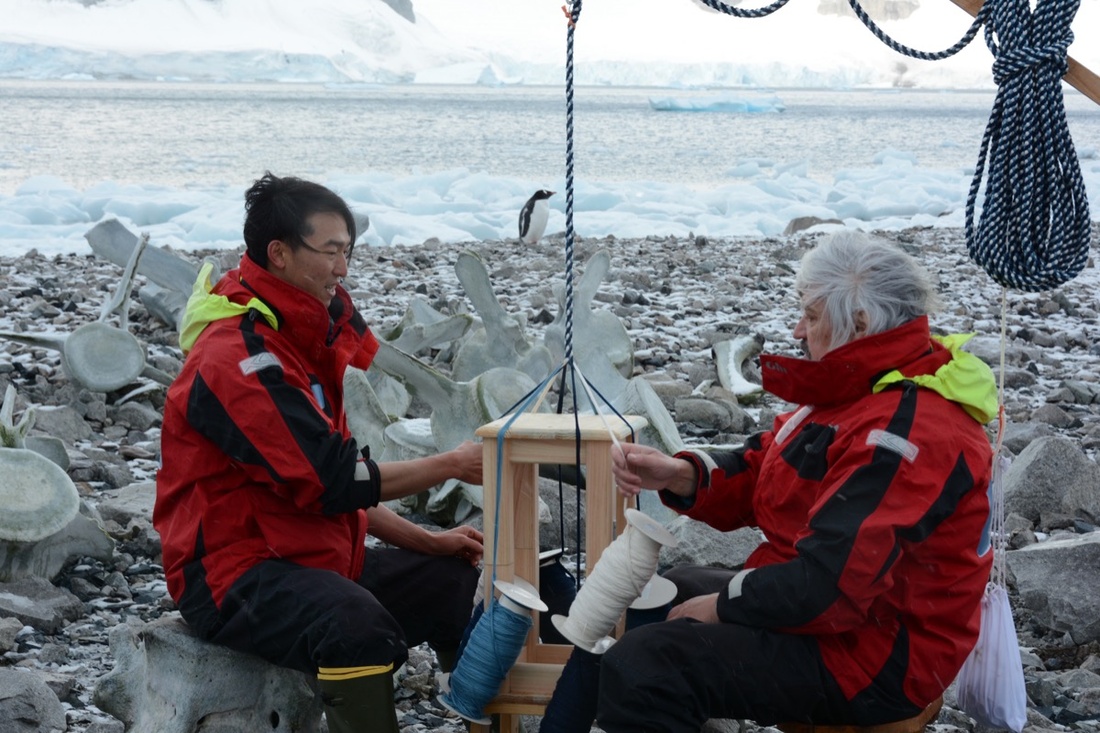 Yasuaki Igarashl. Photo by Sho Hasegawa. Courtesy of Antarctic Biennale.
Yasuaki Igarashl. Photo by Sho Hasegawa. Courtesy of Antarctic Biennale.
The enterprise is the brainchild of Alexander Ponomarev, a Russian artist with sailor credentials and a flair for spectacle. (He rode a submarine into the Venice Biennale in 2007.) When it’s all said and done, shepherding 16 international artists—as well as an oceanographer, an ecologist, and a designer of Mars research labs—to the edge of the planet might prove to be his magnum opus.
(It’s worth noting that the advisory council for the expedition includes major art-world figures, including the Serpentine Gallery’s Hans-Ulrich Obrist and Sam Keller of the Fondation Beyeler.)
Two years ago, in its first appearance at Venice, the Antarctic Pavilion presented speculative architecture for the Southern continent by the likes of Hugh Broughton and Zaha Hadid. That an actual journey will have taken place this time around considerably ups the ante—especially given the logistical challenges the traveling artists have faced.
There has been no shortage of constraints in this flag-planting mission. International eco-conservation rules limit the range of possible artworks on the expedition to actions, performances, temporary installations, and the recording of sound and image. So far, the weather conditions have been only a little less trying than the red tape, and all but two or three of the participating artists have never been to a polar region before.
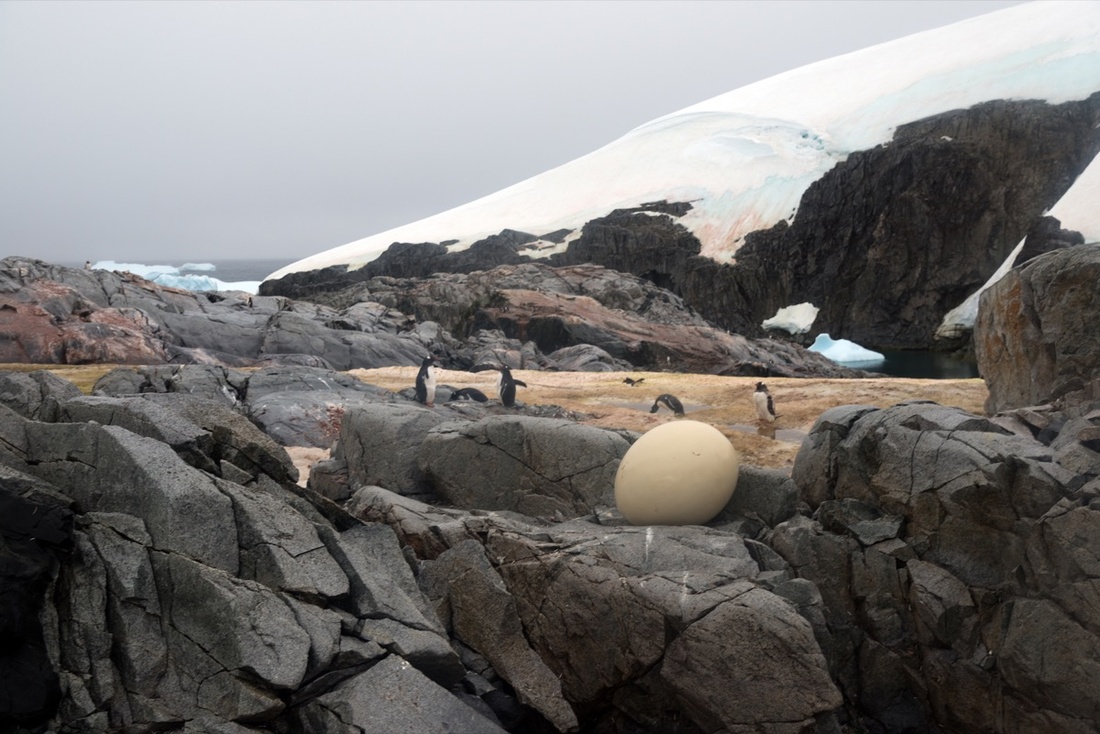 Work by Zhang Enli. Courtesy of Antarctic Biennale.
Work by Zhang Enli. Courtesy of Antarctic Biennale.
Antarctica is often said to resemble another planet. And the art shown upon our first landing, amid preoccupied Gentoo penguins, suggested three forms of interstellar arrival.
Chinese artist Zhang Enli placed an enormous ceramic egg among the rocks. Andrey Kuzkin dug a hole in the snow, stripped naked, and inserted himself into it head-first so that he appeared to have fallen from the sky. (The performance is part of an ongoing project to plant himself, treelike, into the ground in 99 different locations around the world.)
Meanwhile, in contrast to these origin stories, Argentine artist Joaquín Fargas coaxed a solar-powered robot along the frozen surface. Called “Glaciator,” it’s an awkwardly cartwheeling contraption designed to tamp down snow and thus, in its small way, help combat the glacial melt that’s increasingly linked to our impending apocalypse.
It’s a touching gesture—less quixotic than the slim windmills Fargas created for a previous project in Antarctica, but powered by the same concerns.
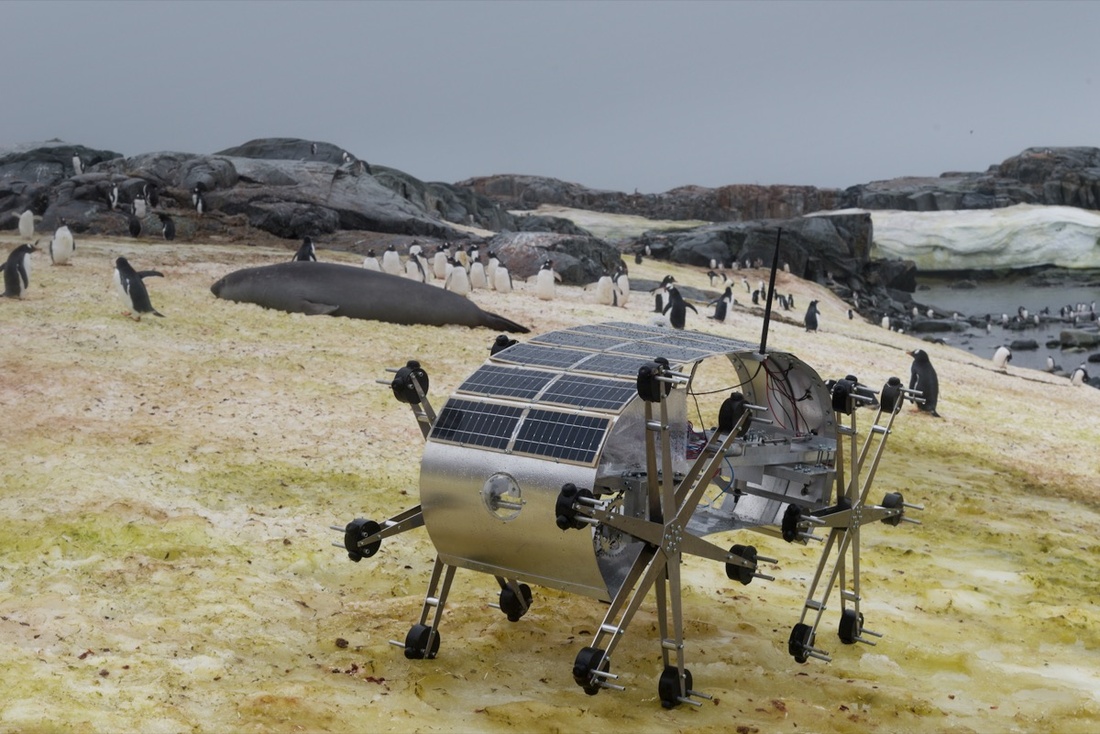 Work by Joaquin Fargas. Courtesy of Antarctic Biennale.
Work by Joaquin Fargas. Courtesy of Antarctic Biennale.
For her part, the Brazilian artist Juliana Cerqueira Leite has made the expedition vessel her art space, installing motion-stabilized chairs below deck, from which she invited passengers to watch a live CCTV feed from the bow. Inspired by the immobility of the poles on a spinning globe, it’s an expert engagement with themes of subjectivity and mediation.
I thought of the enclosed vessels from which we experience even the most eye-opening journeys. Passengers who’d been seasick in the dreaded Drake Passage days earlier likely related to the work even more.
Other artists have also chosen to craft work on board. French-Moroccan artist Yto Barrada soaked fabrics in dyes made from beets, coffee, and other kitchen scraps, achieving delicately beautiful results. (She’ll decide on the next steps for these textiles later.) And Yasuaki Igarashi set up a station for braiding yarn into nautical rope, which required a second person to work the spindles and recalled the sea journeys of another era.
Preferring to engage with the Antarctic’s great planes of ice, Sho Hasegawa found a patch on land and strapped on electricity-generating skates that he’d wired to a light pen. As he drew the landscape onto film, the air filled with a piano composition (courtesy of Canadian artist Lou Sheppard) that had been extrapolated from coastline data. Fur seals canoodled on the ice nearby.
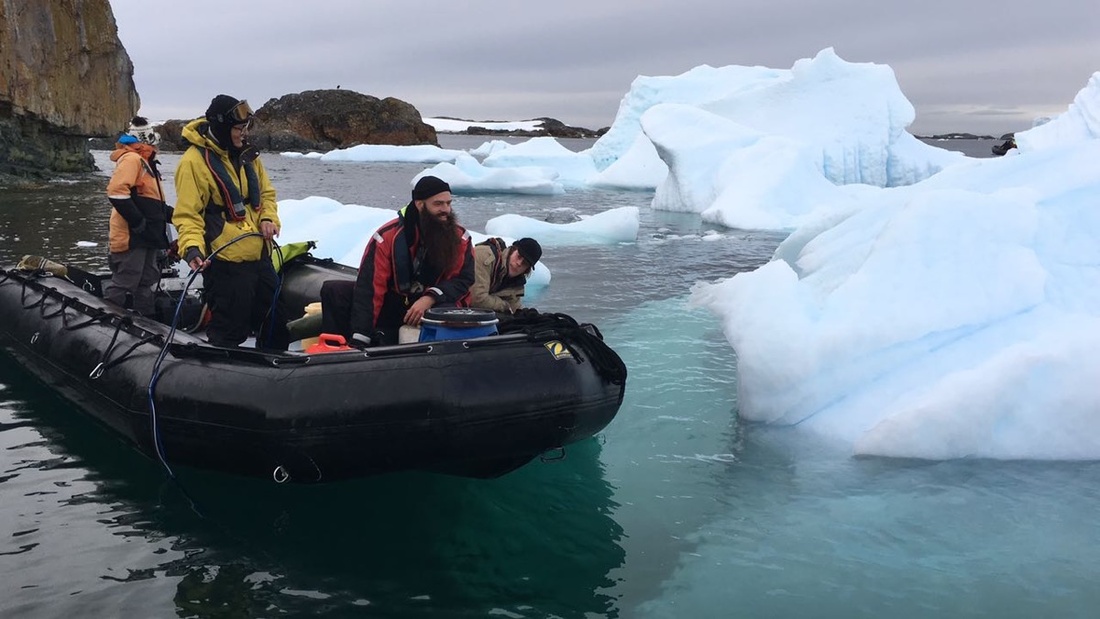 Photo courtesy of Antarctic Biennale.
Photo courtesy of Antarctic Biennale.
Hasegawa’s power source turned out to be more foolproof than others. (At the launch of the trip, the solar-heated balloons of Tomás Saraceno’s “Aerocene” project were still awaiting the right conditions for takeoff.) Mobile and adaptable concepts have fared best in this environment—misjudging the realities of Antarctica, it seems, is the surest path to artistic irrelevance, if not a failure to launch.
What has struck me the most is the notion of Antarctica as a sacred space—an area that artists may find almost untouchable for fear of contamination. This preciousness is part of the promise of Antarctica, as both a subject and context for art.
—Darrell Hartman
Cover image: Photo by Eugene Kaspersky.


No comments:
Post a Comment